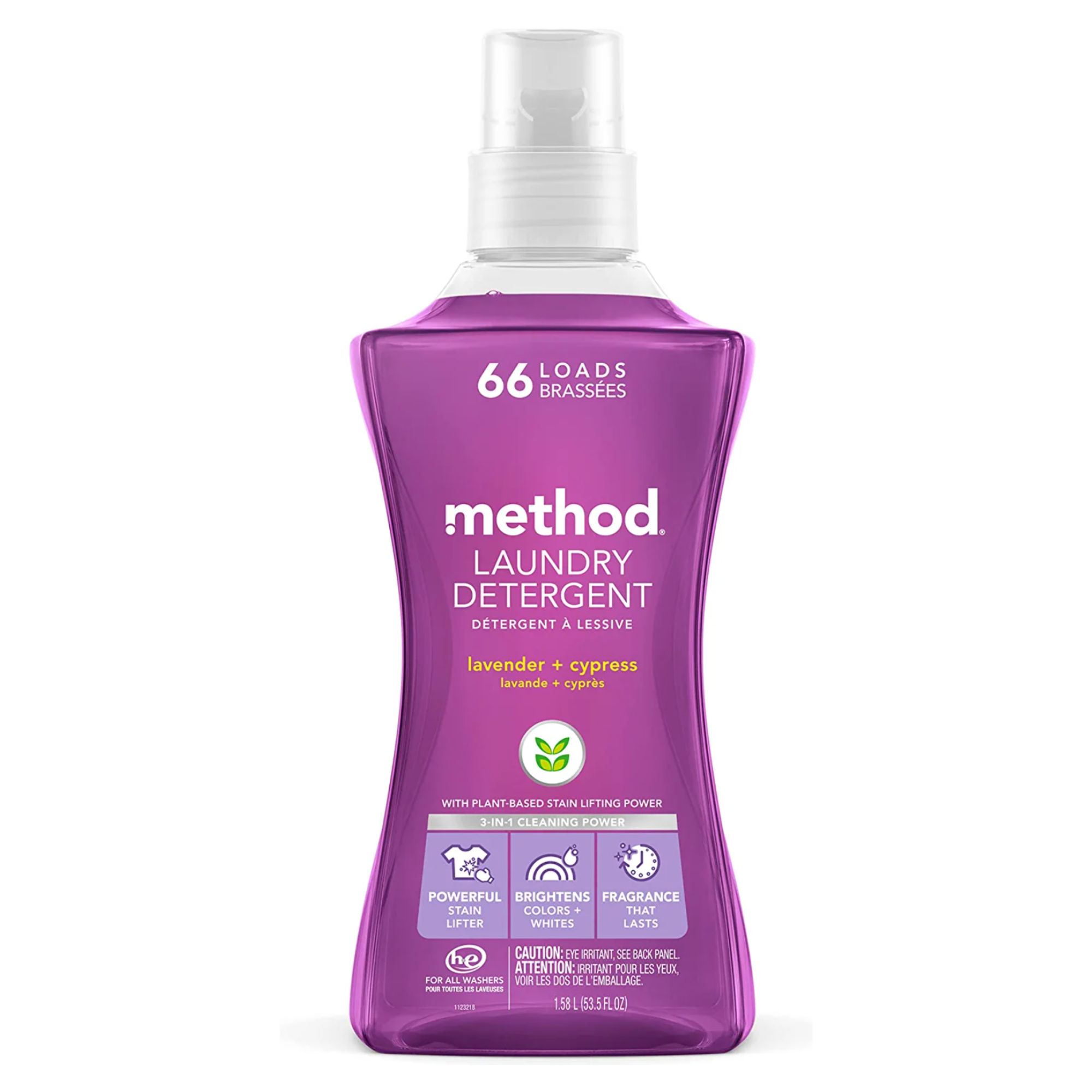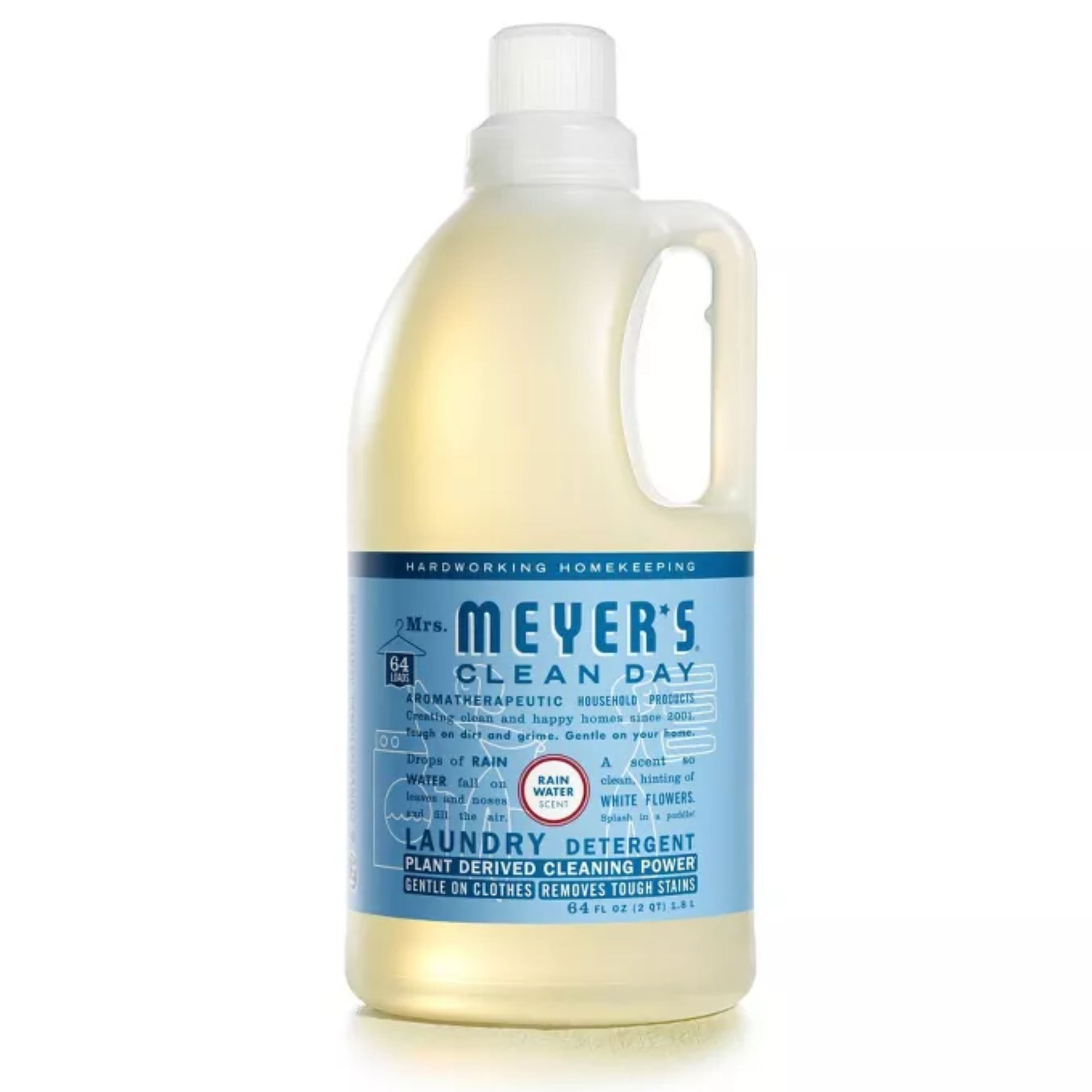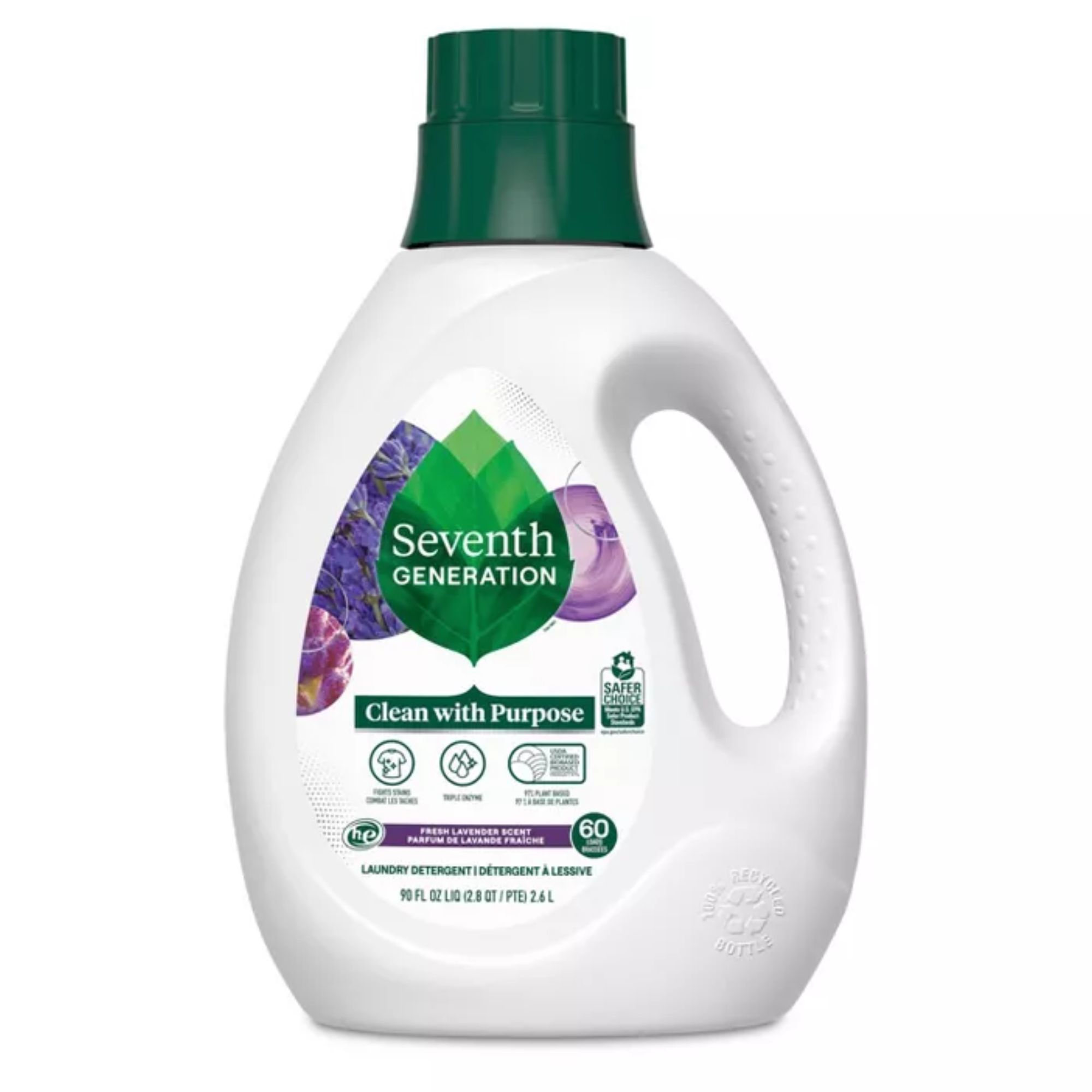9 common laundry myths you didn't know were false
Tbh I never knew these laundry myths weren't true


As any laundry expert will tell you, laundry myths are pervasive. Although doing laundry right seems simple on the surface, the variety of fabrics and styles worn means this common household chore now requires a guidebook.
A variety of different strategies can be used to combat stains, tears, discolorings, or any of the other commonplace issues. But don't worry, you don't actually have to take everything to the dry cleaners and it turns out you can mix your colors. Who knew?
Despite what you may believe, we’re here to bust the myths about stains, fabric types, and laundry products, like our fave laundry room essentials.
Common laundry myths
Myth #1: Always use hot water
Logic dictates that the hotter the water you use, the cleaner your clothes must be but this belief just isn’t true. This laundry myth is also especially dangerous for one reason: It ruins clothing. Get to know the knobs on your washing machine and make it a habit to wash most of your clothing on “cold.” The cold setting is important when removing some of the most common stains (such as dirt) and to prevent discoloration in bright-colored fabrics.
Before you get started, you may need to double-check the tag for instructions. "The care instructions are really important, so grab your magnifying glass, find the care tag, and see if it’s washing machine-friendly. Certain fabrics can be very sensitive and caring for them will vary," says Cyndi Prince, founder and CEO of LooHoo.
Poplin laundry pro Laurie Fulford (Poplin is the world’s largest on-demand laundry service), tells me that some newer washing machines have certain settings for different fabrics. “If your washing machine does not have the setting available, you can choose the delicate cycle and wash in cold water."
Myth #2: More detergent means clothing is cleaner
If you believe pouring a large amount of detergent for each load makes your clothes cleaner, you’ll be surprised to find out that this isn’t the case. In fact, using over the recommended amount of detergent can even serve to damage clothing and coat the fabrics with residue. It’s also possible that too much soap can irritate your skin. For these reasons, it’s always best to read the back labels of your detergent and measure out the recommended amount.
Get small space home decor ideas, celeb inspiration, DIY tips and more, straight to your inbox!
Myth #3: Dryer sheets are necessary
A type of fabric softener, dryer sheets have a complicated reputation. In our modern age, more experts advise against using them. From possibly harming our health to potentially destroying our dryers over time, using dryer sheets is no longer a necessity in your laundry routine. One of the biggest reasons to ditch dryer sheets altogether? They could actually be harming your clothing.
Myth #4: Bleach is only for white clothing
Bleach is an amazing chemical that is known the world over for whitening fabrics but many people don’t understand how to properly use bleach and therefore, end up ruining their linens or clothing. Simply put, there are two types of bleach found at the store: chlorinated or non-chlorinated bleach. Chlorinated is only used for white clothing (not beige or tan) while non-chlorinated bleach can be used on bright-colored clothing to brighten colors. As always, check the labels on your clothing to be certain of how to wash the item.
Myth #5: Laundry pods are better
Tide Pods were launched in 2012 and since then, the debate between laundry pods and using liquid laundry detergent has raged. Because laundry pods are typically more expensive than doling out a measured pour of your laundry detergent, the myth persists that they are somehow better at cleaning our clothes. However, typically, that is not the case and there are plenty of reasons why. Since you cannot change the amount of detergent used, there’s a bigger chance your clothing might be ruined by pods. Also, most laundry pods are made with non-biodegradable plastics, making them potentially harmful to the environment. Our suggestion? Stick with the tried-and-true laundry detergent to save your clothing, your money, and (potentially) the Earth.
Myth #6: Stains are forever
Sure, there are some stains that could potentially be permanent (especially any stains that darken over time) but most stains can be removed with a bit of strategy and elbow grease. Luckily for us, this is proved by vintage collectors and historic textile archivists who have worked diligently to remove stains decades old. One of the best ways to get started is by identifying the stain. Whether you sweat through your favorite dress or experience an ink pen opening on your office pants, identifying the stain is the number one way to learn how to remove it. Next time you spill ketchup on your favorite top, use the search bar to learn how to clean it.
Myth #7: Fabric softener is necessary
Just as dryer sheets have become the norm in our laundry rooms, liquid fabric softener is viewed as a necessity by many. Used to break down stiff fabrics to make them softer, fabric softeners can be great for some clothing, bedding, and towels. However, with questionable (potentially toxic) ingredients in some fabric softeners and the expert belief that they could potentially harm your washing machine, fabric softeners may do more harm than good, especially for clothing that doesn’t need to be conditioned.
Myth #8: “Dry clean only” can’t be washed
Unfortunately for consumers, the labels on our garments aren’t made like they once were. For this reason, some items of clothing marked “dry clean only” on the tag can actually be hand-washed or steamed at home. The trick is to learn which fabric types can be washed by hand or possibly, steamed by a hand steamer. Although you should exercise caution when deciding to wash or steam an item yourself, it’s a myth that all clothing labeled “dry clean only” needs to be cleaned by your dry cleaners.
On the other hand, you may want to utilize a professional for special garments with specific instructions. "Clothes marked on the care tag as dry clean only or items like suits or formal wear are like VIPs at a fancy gala — best cleaned by the pros to keep them looking sharp and sophisticated,” says Prince.
Myth #9: Untreated stained clothes can go in the wash
While it may be tempting to throw your stained clothes in the wash to see if the stains come out, placing untreated stained items in the wash can actually make the stain worse. This is why it’s so important to first treat the stain with tools. Tools like a clean toothbrush, vinegar, and stain removal chemicals can be set aside in your laundry room for easy access when stains happen. By being armed with the knowledge necessary to get your clothing clean, you can use and wear your clothing longer, making your wardrobe last.
Best detergent to use

Covering up to 66 loads, this detergent combines notes of lavender and cypress for one deliciously herbaceous scent and a cleaner, greener wash. Think plant-based stain removers and a biodegradable, hypoallergenic formula.

Tackling dirt and stains with enzymes, this plant-based formula comes in a biodegradable bottle and works in both high-efficiency and standard washing machines. In fact, the softness of the scent is a welcome alternative to the often sterile smell left by many other non-eco detergents we're so used to.

Ticking off a host of green credentials, this cruelty-free, biodegradable product shows no mercy on stains without attacking Mother Nature. As well as containing no dyes, artificial brighteners or synthetic fragrances, it's also certified by the USDA as a Biobased product.
Meet the experts
Frequently asked questions
When should I use bleach?
Bleach and laundry detergent can be used together to clean, whiten, remove stains, and sanitize all of your garments. Bleach will make all of your white clothes look whiter than ever and eliminate the majority of germs in your laundry load. This additive is ideal for removing super stubborn stains, such as sauce or ketchup stains, red wine, coffee, grass, and more.
What can I use besides dryer sheets?
A great alternative to commercial dryer sheets and other scented laundry products is to use essential oils. You can also use naturally-scented, non-toxic laundry soaps available, like the top-rated Mrs. Meyers Clean Day detergent, which you can snag on Amazon. Reusable dryer bags are a much more affordable alternative than dryer sheets, and they come in a wide range of scents too. Etsy has a good range of options, including this set of three dryer sachets.
Now you're a little more clued up on the do's and don'ts of laundry, you may be looking for more inspo. Makeover your laundry room with our best laundry detergent storage ideas to make the most of this tiny space.

Hello! I’m Kate Santos, a writer and photographer based in Los Angeles. In the design world, I got my start working as an Editorial Intern for Dwell magazine in San Francisco. Since then, I’ve written about design and architecture in many national magazines and online publications, including Playboy, Hunker, and The Culture Trip.
I grew up in a very old house in North Carolina and am still influenced by the rustic, charming, antique and aged elements of a home. Sustainability and longevity is extremely important to me and I believe learning to reuse materials or purchasing items you’ll love forever goes a long way. I also lean towards the Japanese philosophy of wabi-sabi when designing my own home, embracing the perfectly imperfect items I can find.

